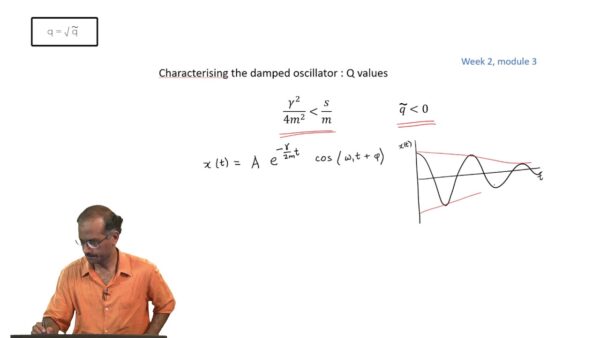What is Oscillation?
Repeated back and forth movement of something between two positions is called oscillation. An oscillation is a periodic motion that repeats itself. Few examples of oscillatory motion are the side-to-side swing of a pendulum and spring moving up and down. The oscillatory motion happens around an equilibrium point. One single up and down oscillation or side-to-side oscillation is considered as a complex movement.
Variables of Oscillation
Amplitude
The amplitude of oscillation is the maximum displacement from the equilibrium point. Let’s consider the example of a pendulum swinging 5 cm from the equilibrium point before it starts returning back. The amplitude of oscillation of the pendulum is 5 cm.
Period
It is the time taken to complete one complete two and fro motion. If the pendulum is started from the right and takes one second to travel to the left and another one second to return back to the starting point in the right then the time period is 2 seconds.
Frequency
Frequency measures the number of cycles per unit time. Frequency is the inverse of the time period.
Simple Harmonic Motion
A motion is said to be simple harmonic motion if the restoring force is directly proportional to the displacement and acts in a direction opposite to the displacement. It is explained using sine and cosine functions.
Damped Oscillations
In the real world, oscillations are rarely following the true simple harmonic motion. Some kind of friction acts on the oscillation and the motion dampen and die away after a while. It requires more force to continue the oscillation. A guitar string stops oscillating after few seconds after being plucked. Therefore completely undamped motion is very rare. A damped oscillation is an oscillation which fades away with respect to time. The parameters that do not change in a damped oscillation is frequency or time period.
Types of Damped Oscillation
Critically Damped Oscillations
The system does not oscillate it returns to its equilibrium position as fast as possible. The damping constant is equal to one for a critically damped oscillation. Critical damping is usually desired because such an oscillation returns to equilibrium position rapidly and remains in equilibrium. An example of critical damping can be seen in speedometers wherein the needle quickly comes to a stable position when the vehicle is accelerated so as to not create any confusion for the driver.
Under Damped Oscillations
The amplitude of the oscillation gradually reduces to zero and it oscillates with a reduced frequency when compared to undamped oscillation. In an underdamped oscillation, the damping constant is less than one.
Over Damped oscillations
The system returns to the equilibrium position slowly without oscillating. The value of damping constant is greater than one. They have higher energy dissipated as compared to another damping system.
Undamped Oscillations
This is a type of oscillation where the restoring force is directly proportional to the displacement. In an undamped system, the magnitude of oscillation remains the same. An example of an undamped oscillation is alternating current.



